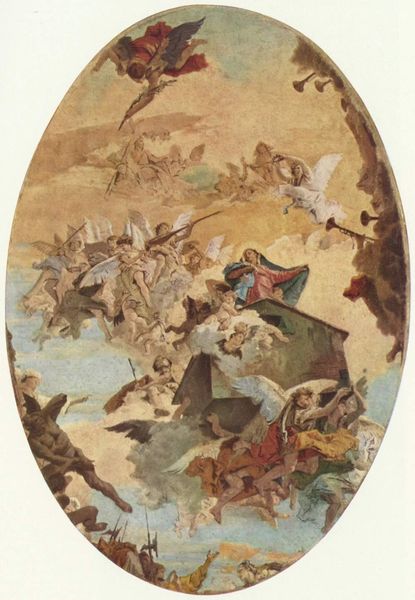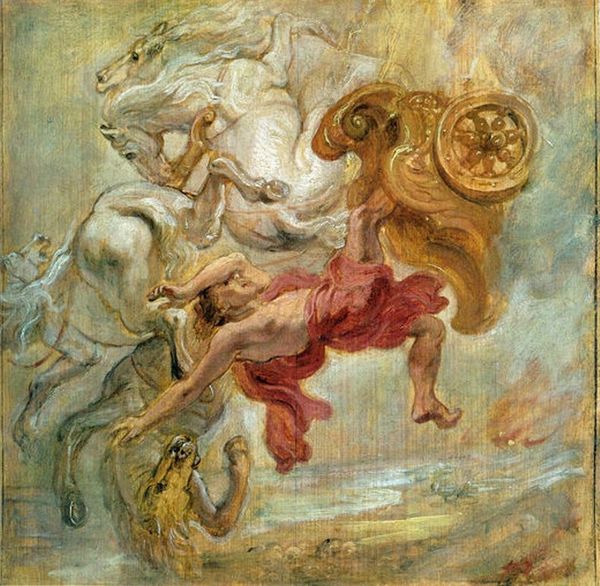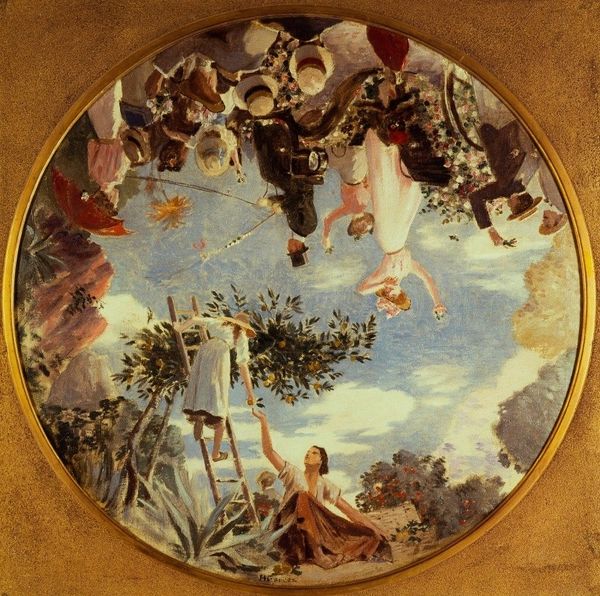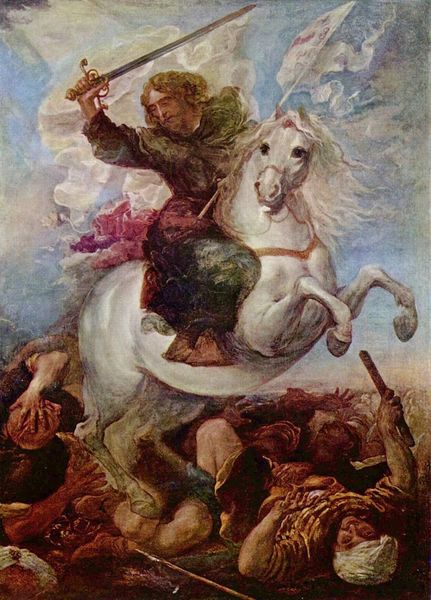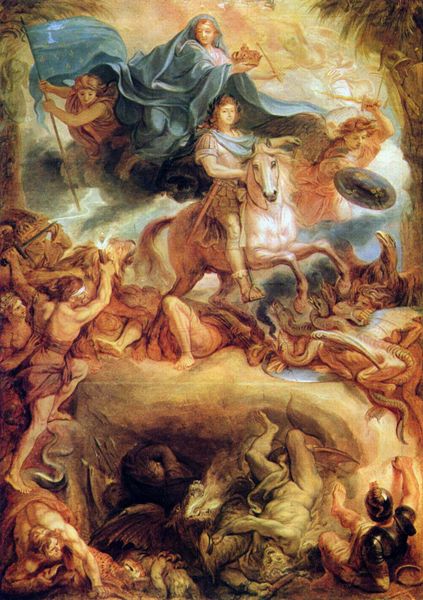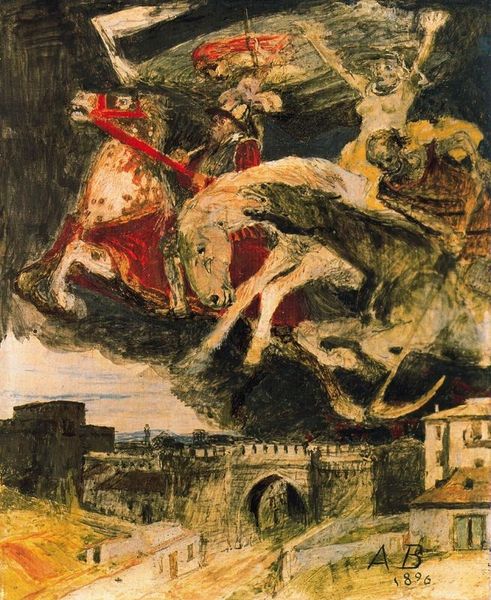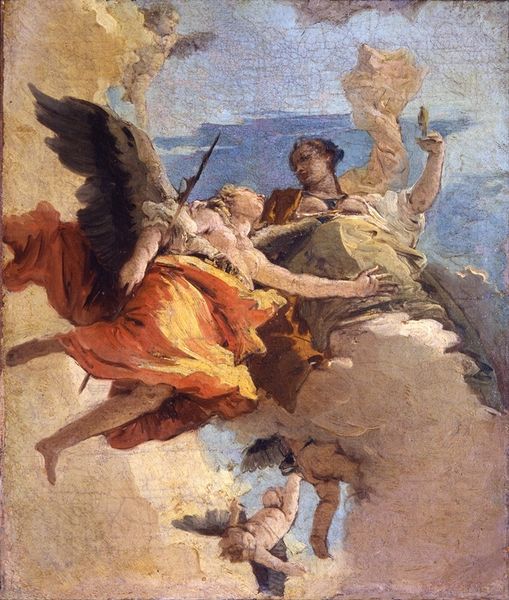
Copyright: Public domain
Editor: This is Giovanni Battista Tiepolo's "Europa," painted in 1753. It seems to be oil paint, perhaps also fresco? The figures and clouds create such a swirling composition. It feels both dynamic and symbolic. What do you see in this piece? Curator: Tiepolo's "Europa" operates on multiple levels, reflective of the socio-political landscape of its time. We see the mythological abduction of Europa, yes, but through a lens that considers patronage and power. Consider the fresco’s location: where was this piece originally viewed and by whom? Who commissioned it and why? Editor: I'm not sure... Presumably someone wealthy? It feels like a show of opulence. Curator: Exactly. The grandeur, the allegory – all served to legitimize power structures. This isn't just about mythology; it's about the public performance of status and cultural capital within the Venetian Republic. Does it challenge or reinforce existing social norms? Editor: It definitely reinforces them, presenting a traditional view of power and wealth. Curator: The painting presents a careful visual construction. We observe how Tiepolo employs devices like perspective and classical references to construct a world rooted in tradition. However, at the same time, these allegories had a place in solidifying political structures of that time. What do you think about that tension? Editor: I suppose I hadn’t thought of the history behind the brush strokes before. So this flamboyant painting also has to do with cultural dynamics of that era? Curator: Precisely. Tiepolo's "Europa" showcases the deep relationship between artistic representation and its social environment. Art and society are intertwined. Editor: This has changed how I view the painting entirely. Now, I understand its function much more deeply! Curator: Glad I could offer another way to look at this piece.
Comments
No comments
Be the first to comment and join the conversation on the ultimate creative platform.
